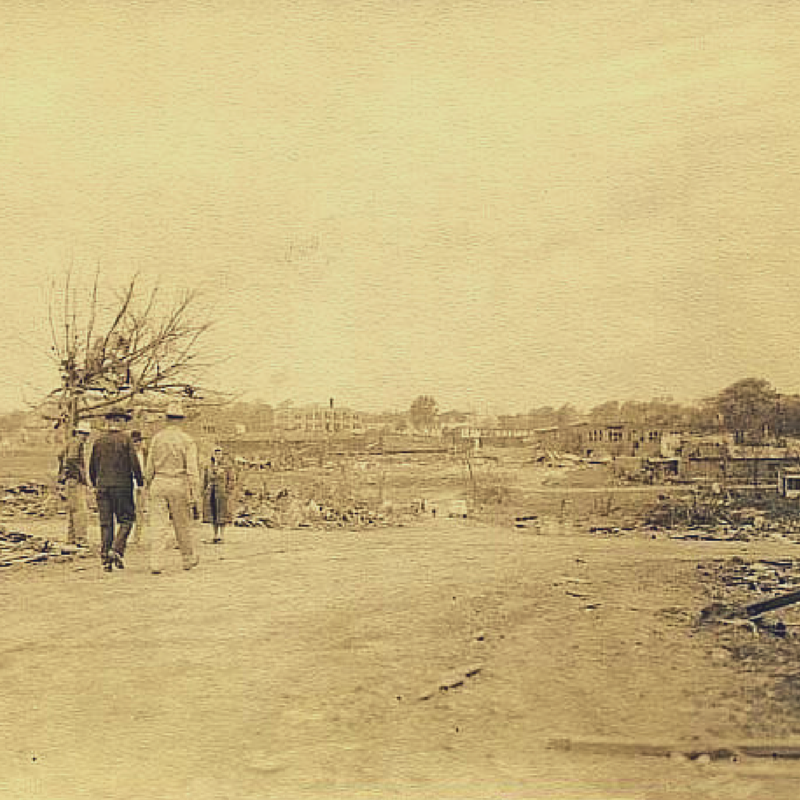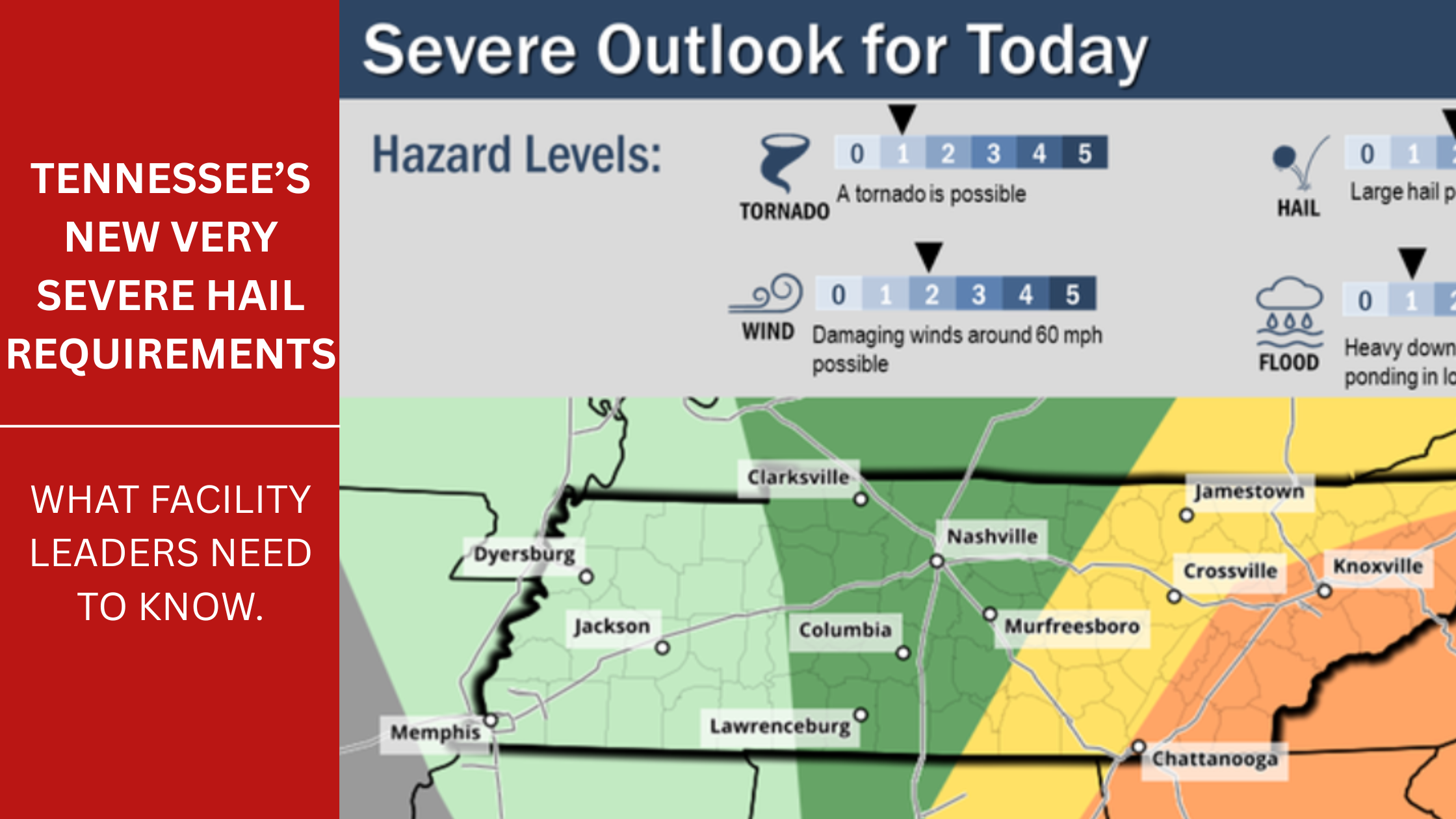This is the third installment in a series that looks at the history of storms in Oklahoma.
On April 13, 1945, while much of the nation was reacting to the death of President Franklin D. Roosevelt, many people in Oklahoma and a few other states were busy recovering from a devastating storm that produced some of the most powerful tornadoes ever measured.

On April 12 a tornado that measured a half-mile wide at its base barreled through the small town of Antlers, located in the southeast corner of Oklahoma near the foot of the Kiamichi Mountains and on the banks of the Kiamichi River. The tornado was so massive and loud that it could be heard from as far away as 25 miles. The winds were estimated to be more than 200 miles per hour. The tornado hit at 5:40 PM, entering Antlers on the ground from the southwest, zig-zagging for several terrifying minutes, and then sweeping away to the northeast where it eventually hit three more Oklahoma communites and even touched down later in Arkansas.
“There was a roaring sound that shook the house from side to side” a resident told the Tulsa Spirit. Another said, “I saw that storm coming, it was dark, and it was wobbling from side to side, it looked like a blanket coming to swallow us up.”
The Antlers tornado was devastating to that small community that numbered only 3,000. Half of the buildings in the community suffered major damage, and 600 structures were destroyed. In one neighborhood of about 15 homes, only one home was left standing. What was so amazing about the devastation was that in several cases buildings were blown away completely, leaving no trace. Entire homes were lifted into the air, smashed, and blown away. Automobiles were spun away and dropped thousands of feet from their original location. One tractor trailer was twisted and mangled and found resting a mile away from where it had once been. The Presbyterian Church was leveled and the pastor’s wife was seriously injured. Four buildings in downtown were ripped from their foundations and left without a trace.
More than 340 people, or 10% of the town, were hospitalized, some of them taken as far away as McAlester, and Paris and Cooper, TX. By the third day after the storm the death toll had hit 58 with five people missing. Ultimately, 69 citizens of the town perished. The local authorities were overwhelmed and officials and volunteers came in from all over the state of Oklahoma. Bodies were transported as far away as 100 miles to funeral homes. An estimated 1,500 people were suddenly homeless without a place for shelter. The Red Cross handed out more than 4,000 meals in the first four days after the tornado. The area churches that weren’t destroyed by the tornado set up cots and invited survivors in, other citizens opened their homes to their neighbors, and some people were driven by bus to nearby communities. Twelve children from Antlers were taken to the Oklahoma Hospital for Crippled Children days after the storm.
An Associated Press story reported that many survivors “appeared dazed” and several “stood on street corners all night discussing the disaster.”
The Antlers grade school, which was relatively unscathed, served as the community hub. Survivors with missing loved ones were asked to remain there until identification could be made of the deceased or for other word on their relatives.
In downtown Antlers several office buildings and businesses were leveled. At one intersection, all four corner businesses had disappeared with only their foundations and some minor debris remaining. Strangely, the Odd Fellows building, the tallest structure in downtown, was left untouched. Some debris from Antlers was found more than ten miles away. Bodies were distributed across several acres and dozens of livestock were killed as well.
Adding to the catastrophe was the threat of an explosion in any one of the many butane tanks in Antlers. A number of the tanks had been damaged by the tornado and no one knew if or when one of them may explode. Thankfully, specialists arrived from Oklahoma City to eliminate the potential hazard.
The cleanup in Antlers was a massive and tedious job thwarted by the lack of electricity and supplies at first. It took more than two weeks for electricity and phone service to be restored to the entire area. Water service took even longer, which resulted in that precious resource being sent in from Red Cross headquarters in Tulsa twice a day. The area had the feel of a war zone. A military plane from Will Rogers field dropped medical supplies and planes were arriving from Dallas with plasma and other much needed items.
Eventually soldiers from the Army base at Camp Maxey (Paris, TX) arrived under the direction of the Army Corps of Engineers. Bulldozers helped clear the rubble while soldiers and volunteers sifted through what remained of many homes. Many neighborhoods in Antlers would never recover. Though estimates vary, the total damage was placed at $3 million in 1945, but there was no way to assess the total damage to Antlers as a community in dollars.
While Antlers was the hardest hit, it was not the only Oklahoma area that got walloped. Eleven were killed in Muskogee, four in Oklahoma City, three in Hulbert, and nine more in other communities. Boggy Depot, a tiny speck of a community on Indian Territory about 45 miles west of Antlers that consisted of only 10-15 homes and a few businesses, was completely wiped off the map. Today it’s a ghost town on State Park land.
How did the people of Antlers and Oklahoma respond to the terrible damage incurred by the tornado? With aplomb. Within days salvage crews were picking up debris and making repairs where they could. Resources were scarce, but the War Production Board authorized the release of one million board feet of wood to rebuild the town. Officials in Washington D.C. released emergency funds to help with transport of building supplies, and the state of Oklahoma recruited and paid for construction workers who would arrive in Antlers after the debris was cleaned up. Antlers would be rebuilt.
The storm system also killed 20 in Arkansas and five in Missouri. Sadly, the bad weather wasn’t finished. On April 27, 1945, another tornado touched ground in Pryor, a small town northeast of Tulsa. That tornado claimed 52 lives.
Due to the sudden and unpredictable nature of tornadoes, it can be extremely difficult to measure their power and force. In 1945 the tools to do so were rudimentary. But the National Weather Service tracked several tornadoes in Oklahoma on April 12 and the one that tore through Antlers was estimated to have winds of more than 200 miles per hour based on those readings and the visible damage done to trees and buildings. It wouldn’t be until 1971 that the Fujita Scale would be established, but the 1945 Antlers tornado was retroactively classified as an F5, the most powerful on that scale. Today, an historical marker is located in Antlers as a reminder of that tornado and the impact it had on the town.














